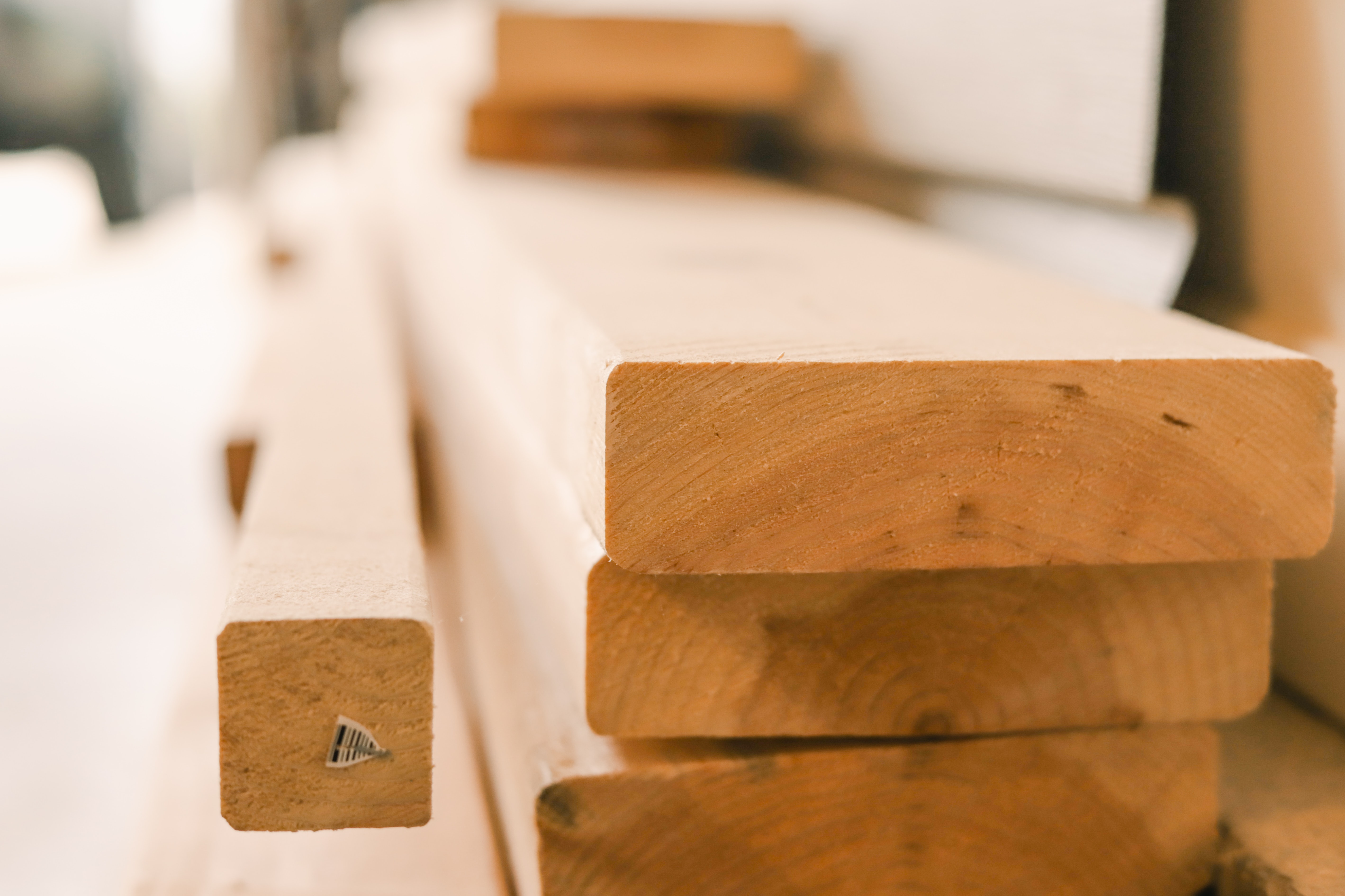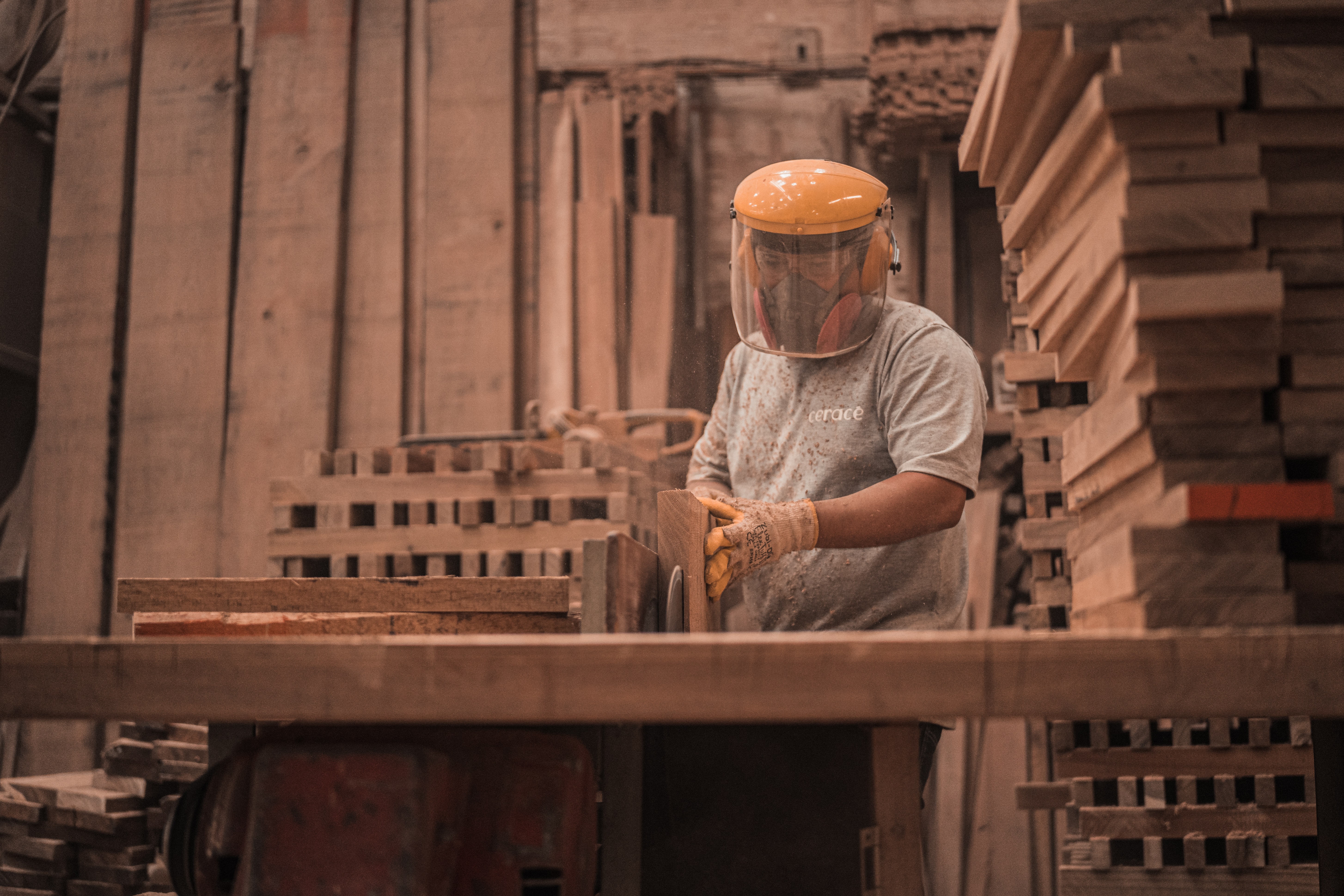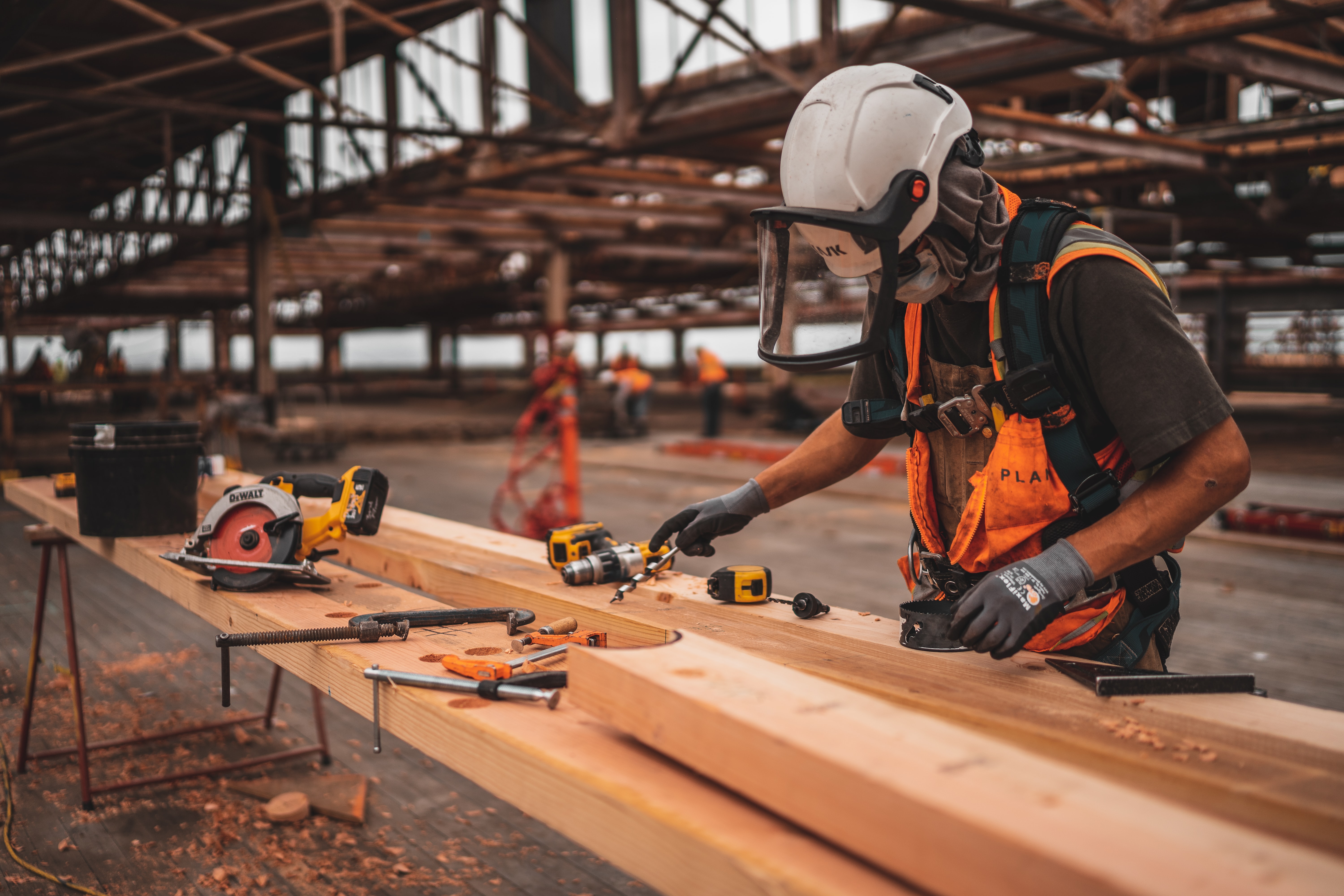Does the Current Lumber Market Merit a Switch to Steel Studs?

Anyone working in construction today doesn’t need to be told that lumber prices are soaring. Target can hardly keep its shelves stocked with basic necessities over a year after the pandemic hit - the economic ramifications are widespread. That fact doesn’t merit a news article. But the current lumber market, up 171% since Covid hit, may deserve a switch to steel studs.
A Case for Wood
There are many reasons to prefer a wood product, and if the team of carpenters assigned to the project is well-experienced using it, it may warrant paying those sky-high prices. It’s one of the “oldest” ways to build, but it’s certainly not going anywhere. Even though it’s expensive, lumber production is still at a 13-year high. Wood is also stronger (its compressive strength is comparable to concrete), easier to cut, and arguably longer lasting than metal studs.
Wood is a living thing, however, and that brings some risks as well. Wood can rot or warp, shrink or split, can be subject to termites, and is more vulnerable than metal when faced with fire. This fire risk could even impact insurance premiums. Wood can also be more challenging to install due to the fact that it’s difficult to get a consistent product when dealing with natural materials.
Wood has a sustainability appeal when it is sourced correctly. Renewable resources can be key when it comes to targeting sustainability. Wood construction also often produces better insulation performance, resulting in lower operating costs for the building owner.
A Case for Metal
Metal studs have their advantages as well, and they aren’t going away. It’s worth considering cross-training construction crews to handle both materials. Metal is lighter, and the opposite of wood: it’s more difficult to shape and cut and easier to install. The metal market is doing well right now too, and this market tends to be a little less volatile.
Another thing to keep in mind is safety - metal can be a bit riskier when it comes to cutting injuries.
As time goes on, construction crews should be well-versed in both materials. This will be a critical competitive advantage for contractors. Design teams will hopefully also be quick to pivot, when necessary, to respond to the market. Although, a major change like that is probably a designer’s worst nightmare!
Metal also has a sustainability advantage, which is a high priority for many contractors and building owners. It can be recycled repeatedly. This has the potential to impact LEED score (the industry standard for sustainability) in a positive way. There are far fewer resources required in metal’s handling and transport, as it is a much lighter material.
At the end of the day, metal seems to be the more versatile player. It can be used for taller and more creative structures.
Food for Thought
There is a lot of great data out there right now about how these markets are doing, and these are great topics to bring up in a GC/CM project (a project where the construction team collaborates with the design team in order to design the final product) when the design isn’t said and done. The construction industry may have never believed it would see the day when metal could qualify as value engineering when substituted for wood, but that day seems to have arrived.
Looking into the future, wood is expected to start dropping in late 2022. In the meantime, builders and homeowners alike are having to face the reality that new single-family homes have increased $36,000 in cost, largely due to these rising lumber costs.
At the end of the day, there’s not a clear answer, but there is a clear case for consideration. Metal studs have been continuing to grow in popularity since they came on the market, and innovation is making them more sustainable and affordable. Take the time to run the numbers - the wood and metal markets are a lot closer than they used to be.
Anyone working in construction today doesn’t need to be told that lumber prices are soaring. Target can hardly keep its shelves stocked with basic necessities over a year after the pandemic hit - the economic ramifications are widespread. That fact doesn’t merit a news article. But the current lumber market, up 171% since Covid hit, may deserve a switch to steel studs.
A Case for Wood
There are many reasons to prefer a wood product, and if the team of carpenters assigned to the project is well-experienced using it, it may warrant paying those sky-high prices. It’s one of the “oldest” ways to build, but it’s certainly not going anywhere. Even though it’s expensive, lumber production is still at a 13-year high. Wood is also stronger (its compressive strength is comparable to concrete), easier to cut, and arguably longer lasting than metal studs.
Wood is a living thing, however, and that brings some risks as well. Wood can rot or warp, shrink or split, can be subject to termites, and is more vulnerable than metal when faced with fire. This fire risk could even impact insurance premiums. Wood can also be more challenging to install due to the fact that it’s difficult to get a consistent product when dealing with natural materials.
Wood has a sustainability appeal when it is sourced correctly. Renewable resources can be key when it comes to targeting sustainability. Wood construction also often produces better insulation performance, resulting in lower operating costs for the building owner.
A Case for Metal
Metal studs have their advantages as well, and they aren’t going away. It’s worth considering cross-training construction crews to handle both materials. Metal is lighter, and the opposite of wood: it’s more difficult to shape and cut and easier to install. The metal market is doing well right now too, and this market tends to be a little less volatile.
Another thing to keep in mind is safety - metal can be a bit riskier when it comes to cutting injuries.
As time goes on, construction crews should be well-versed in both materials. This will be a critical competitive advantage for contractors. Design teams will hopefully also be quick to pivot, when necessary, to respond to the market. Although, a major change like that is probably a designer’s worst nightmare!
Metal also has a sustainability advantage, which is a high priority for many contractors and building owners. It can be recycled repeatedly. This has the potential to impact LEED score (the industry standard for sustainability) in a positive way. There are far fewer resources required in metal’s handling and transport, as it is a much lighter material.
At the end of the day, metal seems to be the more versatile player. It can be used for taller and more creative structures.
Food for Thought
There is a lot of great data out there right now about how these markets are doing, and these are great topics to bring up in a GC/CM project (a project where the construction team collaborates with the design team in order to design the final product) when the design isn’t said and done. The construction industry may have never believed it would see the day when metal could qualify as value engineering when substituted for wood, but that day seems to have arrived.
Looking into the future, wood is expected to start dropping in late 2022. In the meantime, builders and homeowners alike are having to face the reality that new single-family homes have increased $36,000 in cost, largely due to these rising lumber costs.
At the end of the day, there’s not a clear answer, but there is a clear case for consideration. Metal studs have been continuing to grow in popularity since they came on the market, and innovation is making them more sustainable and affordable. Take the time to run the numbers - the wood and metal markets are a lot closer than they used to be.
Anyone working in construction today doesn’t need to be told that lumber prices are soaring. Target can hardly keep its shelves stocked with basic necessities over a year after the pandemic hit - the economic ramifications are widespread. That fact doesn’t merit a news article. But the current lumber market, up 171% since Covid hit, may deserve a switch to steel studs.
A Case for Wood
There are many reasons to prefer a wood product, and if the team of carpenters assigned to the project is well-experienced using it, it may warrant paying those sky-high prices. It’s one of the “oldest” ways to build, but it’s certainly not going anywhere. Even though it’s expensive, lumber production is still at a 13-year high. Wood is also stronger (its compressive strength is comparable to concrete), easier to cut, and arguably longer lasting than metal studs.
Wood is a living thing, however, and that brings some risks as well. Wood can rot or warp, shrink or split, can be subject to termites, and is more vulnerable than metal when faced with fire. This fire risk could even impact insurance premiums. Wood can also be more challenging to install due to the fact that it’s difficult to get a consistent product when dealing with natural materials.
Wood has a sustainability appeal when it is sourced correctly. Renewable resources can be key when it comes to targeting sustainability. Wood construction also often produces better insulation performance, resulting in lower operating costs for the building owner.
A Case for Metal
Metal studs have their advantages as well, and they aren’t going away. It’s worth considering cross-training construction crews to handle both materials. Metal is lighter, and the opposite of wood: it’s more difficult to shape and cut and easier to install. The metal market is doing well right now too, and this market tends to be a little less volatile.
Another thing to keep in mind is safety - metal can be a bit riskier when it comes to cutting injuries.
As time goes on, construction crews should be well-versed in both materials. This will be a critical competitive advantage for contractors. Design teams will hopefully also be quick to pivot, when necessary, to respond to the market. Although, a major change like that is probably a designer’s worst nightmare!
Metal also has a sustainability advantage, which is a high priority for many contractors and building owners. It can be recycled repeatedly. This has the potential to impact LEED score (the industry standard for sustainability) in a positive way. There are far fewer resources required in metal’s handling and transport, as it is a much lighter material.
At the end of the day, metal seems to be the more versatile player. It can be used for taller and more creative structures.
Food for Thought
There is a lot of great data out there right now about how these markets are doing, and these are great topics to bring up in a GC/CM project (a project where the construction team collaborates with the design team in order to design the final product) when the design isn’t said and done. The construction industry may have never believed it would see the day when metal could qualify as value engineering when substituted for wood, but that day seems to have arrived.
Looking into the future, wood is expected to start dropping in late 2022. In the meantime, builders and homeowners alike are having to face the reality that new single-family homes have increased $36,000 in cost, largely due to these rising lumber costs.
At the end of the day, there’s not a clear answer, but there is a clear case for consideration. Metal studs have been continuing to grow in popularity since they came on the market, and innovation is making them more sustainable and affordable. Take the time to run the numbers - the wood and metal markets are a lot closer than they used to be.
May 6th, 2021 | construction, covid-19, construction management, resources
Related Posts
SIGN UP FOR OUR NEWSLETTER
Recent Posts
Categories
Archives
Archives
- January 2024 (1)
- July 2023 (1)
- January 2023 (1)
- September 2022 (1)
- March 2022 (3)
- February 2022 (3)
- January 2022 (2)
- December 2021 (4)
- November 2021 (2)
- October 2021 (2)
- September 2021 (2)
- August 2021 (2)
- July 2021 (3)
- June 2021 (2)
- May 2021 (2)
- April 2021 (2)
- March 2021 (5)
- February 2021 (4)
- January 2021 (1)
- December 2020 (1)
- November 2020 (3)
- October 2020 (2)
- September 2020 (2)
- August 2020 (2)
- June 2020 (1)
- May 2020 (2)
- April 2020 (1)
- March 2020 (2)
- February 2020 (1)




